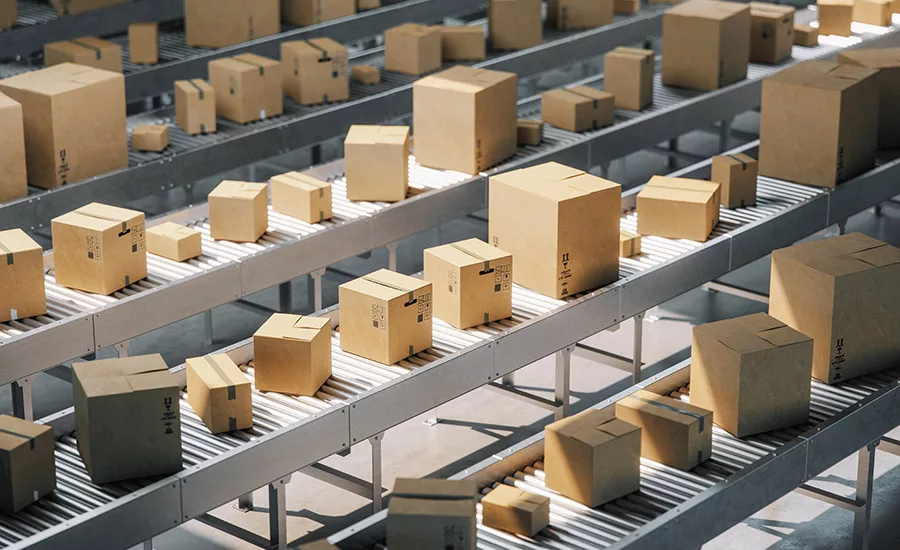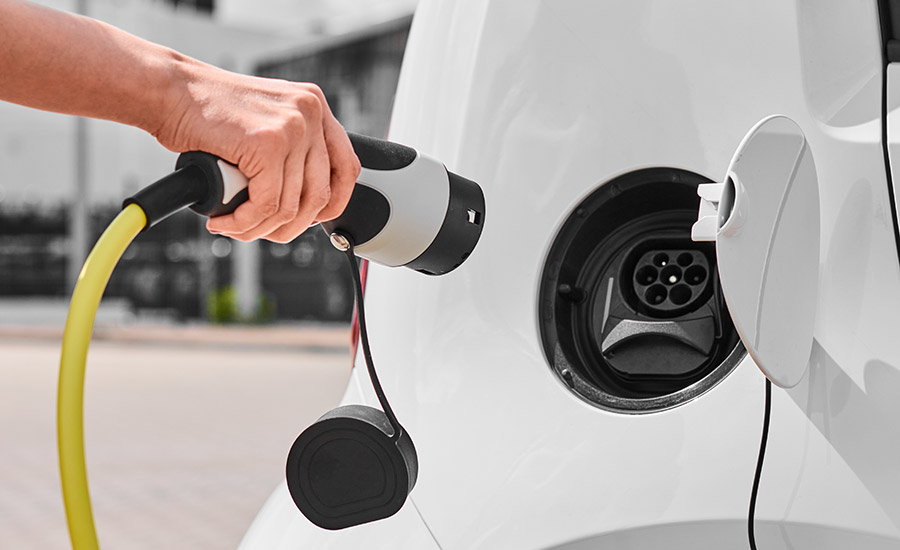Market Trends
Myriad Trends Offer Growth Opportunities for Adhesives Industry
A range of global trends will redefine the future of the global adhesives market, which is estimated to exceed a value of $64.7 billion by 2027.

Photo courtesy of cokada via iStock/Getty Images Plus.

(Photo courtesy of imaginima via E+ at gettyimages.com)
Modern design trends, tight cost estimates, sustainability, and innovation—today’s adhesives and sealants industry faces several challenges. These trends will undoubtedly redefine the future of the global adhesives market, which is estimated to exceed a value of $64.7 billion by 2027. But how?
Ecommerce Sector
Water-based acrylic adhesives have become the natural fit for high productivity with low conversion energy and adaptable viscosity profiles for a range of packaging surfaces. The spotlight is on end-product durability, suitability for a range of substrates, value for money, and clean machining properties. UV detection systems have come on the horizon to propel quality during production.
Amid the COVID-19 fallout, online shopping has witnessed unprecedented growth, triggering demand for sustainable, secure, and efficient packing and shipping. Packaging companies have shifted their focus to automated systems, and pressure-sensitive adhesives have come into the limelight to keep up with the demand for efficient supply chains through advanced adhesive formulations.
As world leaders aim to surmount end-of-life packaging challenges, stakeholders are striving to keep packaging waste from being sent to incineration facilities or landfills. Technological advancements and vast expansions in output and machine speeds are counting on adhesive performance. Consumer packaging adhesives for high-impact solutions, which enable fast-moving consumer goods companies to achieve sustainable and efficient solutions, will remain at the helm of the global adhesives and sealants industry.
Reseal and Reclosable Packaging
Rising demand for resealable functionality to seek sustainability, convenience, reduced waste, and an urgency to maintain freshness has resulted in increasing interest in resealable and reclosable adhesives for food packaging. Reseal packaging is the new normal, and extrudable reseal adhesives are bringing a seismic shift with smart technology. Doing away with the need for secondary packaging such as plastic containers, slider reclosures, and zippers while preserving freshness, extrudable reseal adhesives have become the go-to solution.
Meanwhile, water-based adhesives can bring convenience and brand value to the fore for food packaging applications, including confectionary, bakery, and snacks products. They have become invaluable for boosting operational efficiencies and humidity protection.
Temporary Adhesives
Researchers at Dartmouth College have reportedly made a breakthrough pertaining to the viability of a super-strong temporary adhesive technology. The innovation is believed to help remove the adhesive without using force. The researchers assert that the nonpermanent glues will pioneer new manufacturing techniques and pharmaceutical design.
Focusing on molecular solids, the researchers claim that the temporary adhesives can be instrumental in semiconductor manufacturing, which demands both easy debonding and strong holding power. The innovation could potentially lead to new and robust manufacturing strategies where on-demand release from adhesion is a priority.
Construction Industry
According to Global Construction Perspectives and Oxford Economics, average global construction growth is likely to be pegged at 3.9% per year to 2030—outpacing global GDP by more than one percentage point. The study further estimates that the global construction market will expand by $8 trillion in the same timeframe.
The construction industry is easily one of the largest markets for adhesives and sealants. Several construction materials rely on adhesives, including insulation foams, plastics, wood-based panels, and other new synthetic raw materials for decoration.
 (Photo courtesy of galitskaya via iStock/Getty Images Plus)
(Photo courtesy of galitskaya via iStock/Getty Images Plus)
Water-based acrylic polymers will play an invaluable role in sealants applications. Simply put, construction adhesives, gunnable sealants, and special adhesives for construction have warranted a quality binder. Weather-resistant sealing for façade elements, affixing building components, or interior finishing with adhesives have come on the back of traction for polyurethane materials.
An injection of funds in sealants to propel viscosity, spectrum, and mechanical properties will bolster product adoption. The use of sealants in new architectural construction projects with glass façades has further set the trend. A notable traction for green building and the global push to comply with REACH will further propel sealant portfolios in the modern construction landscape.
Solutions for Automotive
Reliable sealing solutions for automotive OEMs are focusing on sustainability, noise reduction, e-mobility, and the internet of things. When it comes to braking systems, seal combinations made of polytetrafluoroethylene (PTFE) and elastomers have become the next-generation solution for performance, weight savings, and safety.
The thriving e-mobility sector has placed huge demands on sealant manufacturers to develop high-performance seals with advanced digital processes to minimize lead times. Silane-modified polymer sealants have become increasingly sought after for exterior automotive and industrial applications due to their weatherability and UV stability properties.
 (Photo courtesy of Volodymyr Kalyniuk via iStock/Getty Images Plus)
(Photo courtesy of Volodymyr Kalyniuk via iStock/Getty Images Plus)
Sustainability, local content, and cost are likely to remain at the forefront. Various ranges of adhesives have become available for bonding and laminating interior components, including displays, door panels, cockpits, headliners, dashboards, and instrument panels. With automotive displays gaining massive traction in connected vehicles, single-component adhesives to attain high-performance bonding for touch-panel sensors, cover lenses, assembly in application, and direct bonding will continue to be replete with investments.
As autonomous and connected vehicles witness a meteoric rise, vehicle interiors are all but certain to act as fulcrums of information for passengers. Advanced adhesives for in-vehicle screens are likely to enhance contrast and clarity. With millions of cars being built with touch integration and display technology, adhesives manufacturers have increased their investments in optical clarity. Optically clear adhesive technology is said to resist higher temperature ratings compared to traditional films.
Bio-Based Adhesives and Sealants
Bio-based materials have gained momentum in packaging and consumer goods to curb environmental impacts. Close collaboration within the adhesives and sealants market has become the new mantra. Industry participants are leaving no stone unturned to reap rewards from bio-based materials and products made from recyclable plastic waste.
While multiple challenges abound, opportunities through furthering sustainability efforts can undergird the revenue and profit pools for adhesive and sealant producers. A bullish market outlook will potentially ride on manufacturing innovations and prevailing trends.
For more information, visit www.gminsights.com.
Looking for a reprint of this article?
From high-res PDFs to custom plaques, order your copy today!




